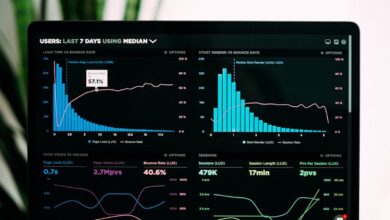Harnessing Gen AI for smarter analytics, CIO News, ET CIO

Modern organizations are strategically building a comprehensive “Data to Outcome” platform that encompasses the entire process from data collection and processing to business insights, predictions and actionable intelligence. They are imbibing a continuous data and insights pipeline view in place of managing standalone components for data management, Analytics and Business Intelligence (BI). This changed paradigm embraces a holistic perspective of a unified ecosystem that seamlessly integrates discreet functionalities.
A vital component that powers these modern end-to-end ecosystems is Gen AI. It helps organizations unlock the full potential of their data, overcoming conventional limitations with advanced analytics and processing capabilities.
Gen AI-powered interactions enhances user experience with an intuitive interface to complex data and Analytics and BI tools, empowering a broader audience to make data-driven decisions.
Enhanced pattern recognition
Gen AI excels at identifying intricate patterns and correlations within data. It helps uncover hidden, but highly potent business insights that elude scrutiny of human or traditional analytics models.
Instant results with prompt engineering
Conventional Analytics use cases like entity extraction, classification and sentiment analysis require Machine Learning (ML) skills and custom model training. With Prompt Engineering and Gen AI, these are made accessible even for users who have no ML expertise. This democratization of advanced analytics enables non-technical users leverage intricate insights, and promotes an inclusive and collaborative approach to decision making.
Predictive and forecast analysis
Traditional ML models often lack comprehensive variable consideration. By anticipating outcomes considering a diverse array of factors, Gen AI surpasses conventional forecasting methods in precision.
Moreover, Gen AI steadily improves its predictive accuracy over time by dynamically adapting to evolving data patterns, taking both historical and emerging factors into account.
AI-driven personalized interactions
Gen AI models up-level conventional market segment analysis with a granular level of comprehension and prediction of user behavior. This enables highly personalized customer experiences, interactions, products and services that are improvement over traditional methods, leading to better customer engagement, loyalty and satisfaction.
Automated decision-making
Gen AI sets the bar at prescriptive actions, instead of extracting insights from diagnostic and predictive analytics, and letting users choose the best options. Given appropriate controls and access, this capability can be used to take decisions autonomously and even initiate actions.
Continuous learning and evolution
Gen AI models continually learn and evolve with extensive data, enhancing efficiency and effectiveness over time. As data volumes grow, this perpetual learning allows for more adept handling of tasks. It thus is emerging as a strategic asset for industries requiring adaptive, data-driven solutions in the face of dynamic and unpredictable challenges.
A Gen AI-powered BI and Analytics system in healthcare supply chain for example, initially predict demand patterns based on historical data. Over time, as the system encounters real-time data, the model becomes increasingly proficient in foreseeing demand spikes, optimizing inventory levels and proactively addressing supply chain bottlenecks.
Challenges in building with Gen AI
While Gen AI promises building a smarter analytics data-to-outcome platform, it also has several implementation challenges:
Integration complexity: Integrating data from diverse sources including unstructured data from social media, audio, video etc. for processing requires a sophisticated integration framework.
Data accuracy and timeliness: The quality of insights derived from Gen AI is directly dependent on the cleanliness and recency of the data. Maintaining a consistently high-quality and updated data repository is imperative. This demands robust capabilities to sync source changes and refresh target systems promptly.
Rapid Gen AI advancements: The rapid pace of advancements in Gen AI poses an ongoing challenge. To harness the evolving faculties, Analytics solutions must have agility and adaptability, incorporating new features and methodologies as they emerge.
Data privacy and security measures: Safeguarding data privacy and securing intellectual property against potential breaches stands out as a critical challenge.
Ethical challenges: Gen AI-powered chatbot or agents must be designed to prevent abusive, racial or unethical responses; warranting that interactions remain neutral, respectful and unbiased.
Addressing challenges
Comprehensive data engineering strategy
A robust data engineering strategy is required to address diverse data formats. Using Natural Language Processing (NLP) for text and voice recognition algorithms for audio and video is needed. Moreover, users should be provided with the freedom of choice of the most suitable LLM based on their specific use case.
Continuous data quality assurance
It is crucial for the data processing platform to establish automated pipelines that synchronize data changes, and apply data quality checks between source and target systems. This ensures timely updates and accuracy of insights. Employing LLMs for data quality checks enhances the system’s ability to identify and rectify discrepancies, ensuring a consistent and reliable dataset for analysis.
Agile evolution of Gen AI stack
A Gen AI powered data-to-outcome platform must embody agility as a core tenet. It must continuously evolve to keep pace with the rapid advancements in Gen AI, integrating new advancements. Reusable AI solution blueprints should be used, with a modular and scalable architecture.
Strengthening data privacy
Enterprises need to establish clear governance structures for provisioning of data for Gen AI use cases. Policies and guardrails should be strictly enforced for data to outcomes platform. A centralized gateway may be used to validate every AI generated response to prevent leaks of Personally Identifiable Information (PII), identify and stop unintended biases and mitigate the risk of generating inappropriate responses.
Gen AI propels BI and data ecosystems into a faster and smarter lane. However, the path to successful implementation requires handling several challenges ranging from technical, design and process to skill availability and high costs involved. Gaining buy-in from stakeholders across the organization is critical.
A careful evaluation of the Gen AI use-cases for potential impact and value in terms of measurable ROI in a stated timeframe is vital. Selecting a high ROI case for improving operational efficiency, optimizing processes and enhancing decision-making capabilities is essential for stakeholder alignment and successful adoption.
Making the right choice of the initial integration point serves to be a pragmatic and successful entry strategy.
The author is Amarjeet Singh Khalsa, Solutions Architect, Gathr Data Inc
Disclaimer: The views expressed are solely of the author and ETCIO does not necessarily subscribe to it. ETCIO shall not be responsible for any damage caused to any person/organization directly or indirectly.




